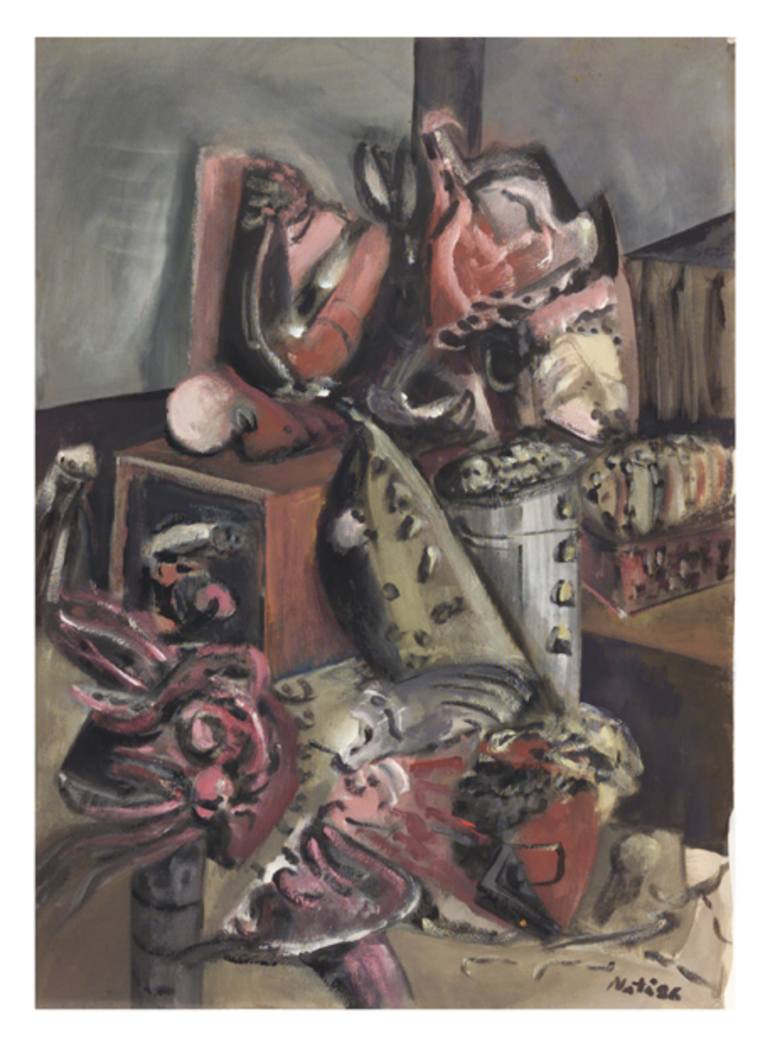


VIEW IN MY ROOM
Relicta, n.06 Painting
Italy
Painting, Acrylic on Canvas
Size: 27.6 W x 39.4 H x 0.1 D in
Ships in a Crate
About The Artwork
Shards of metal, petrified plants, mucous membranes, multi-eyed shapes, columns on platforms, animal carcasses, triglyphs, mineral mixtures, eruptions, larva. Human presence is banished; only surrogates can be shown. Depicted in their hurried maceration, these post-modern still-lives are redeemed by something epic.
Details & Dimensions
Painting:Acrylic on Canvas
Original:One-of-a-kind Artwork
Size:27.6 W x 39.4 H x 0.1 D in
Frame:Other
Ready to Hang:Not applicable
Packaging:Ships in a Crate
Shipping & Returns
Delivery Time:Typically 5-7 business days for domestic shipments, 10-14 business days for international shipments.
Handling:Ships in a wooden crate for additional protection of heavy or oversized artworks. Crated works are subject to an $80 care and handling fee. Artists are responsible for packaging and adhering to Saatchi Art’s packaging guidelines.
Ships From:Italy.
Customs:Shipments from Italy may experience delays due to country's regulations for exporting valuable artworks.
Have additional questions?
Please visit our help section or contact us.
Italy
Nata is a contemporary artist, born in 1955 in Udine, Italy. From Emilio Vedova, his mentor at the Academy of Arts in Venice, he inherited the inclination for doing things in a big way, “on the first try,” with no second thoughts. In Nata’s opinion, painting either must be performed on impulse, or it does not exist at all. But anyone who knows his current works should not find it difficult to see their forerunners in Relicta. In 1985 he moved to Milan where he met the art critic Giovanni Testori who was the first interpreter of Nata and responsible for giving the title Relicta to this entire cycle of works. In the disheveled forms of Relicta, Testori glimpsed allusions to the 1976 earthquake in Friuli Venezia Giulia along with a vaguely medieval severity combined with this reference to a not so distant past. It is no surprise the author of Ambleto (a deliberately distorted rewriting of Shakespeare) allowed himself an impassioned comment: works like these best summarized his idea of art as an existential declaration. He stated he was disconcerted by the “incestuously mixed nature” of Relicta. He noticed signs of a tragic religiosity, and was impressed by the ability to join that atmosphere of ruin with a hidden, throbbing energy. His fellow artists included Klaus Mehrkens, Martin Disler, Bernd Zimmer, and Rainer Fetting. They represent, in a different way, the standard bearers of that neo-representational wave from Northern Europe that found its main driving force in Enzo Cannaviello’s Milan gallery. Beyond the shows in Italy and abroad, Nata shares the same restless emotion with these artists, but stands apart from them in his different attitude; his paintings never lack sincerity, and this may be the reason that, after almost thirty years, the paintings in Relicta have never grown old. These paintings seem like the digestion of an art history manual. To those who can recognize them, the artist immerses viewers in such a huge number of references, clues, and allusions that they become almost uncomfortably satiated. Piranesi, Magnasco, Picasso, De Chirico, Sironi, Matta, Savinio, Bacon, Masson, Sutherland; this dizzying succession of names could go on and on, but would be difficult to complete. Yet, there is no reference to appropriated art, no concession to repetition, let alone copying. Nata deconstructs those artists, contaminates them, superimposes and hybridizes them.
Thousands Of Five-Star Reviews
We deliver world-class customer service to all of our art buyers.
Global Selection
Explore an unparalleled artwork selection by artists from around the world.
Satisfaction Guaranteed
Our 14-day satisfaction guarantee allows you to buy with confidence.
Support An Artist With Every Purchase
We pay our artists more on every sale than other galleries.
Need More Help?